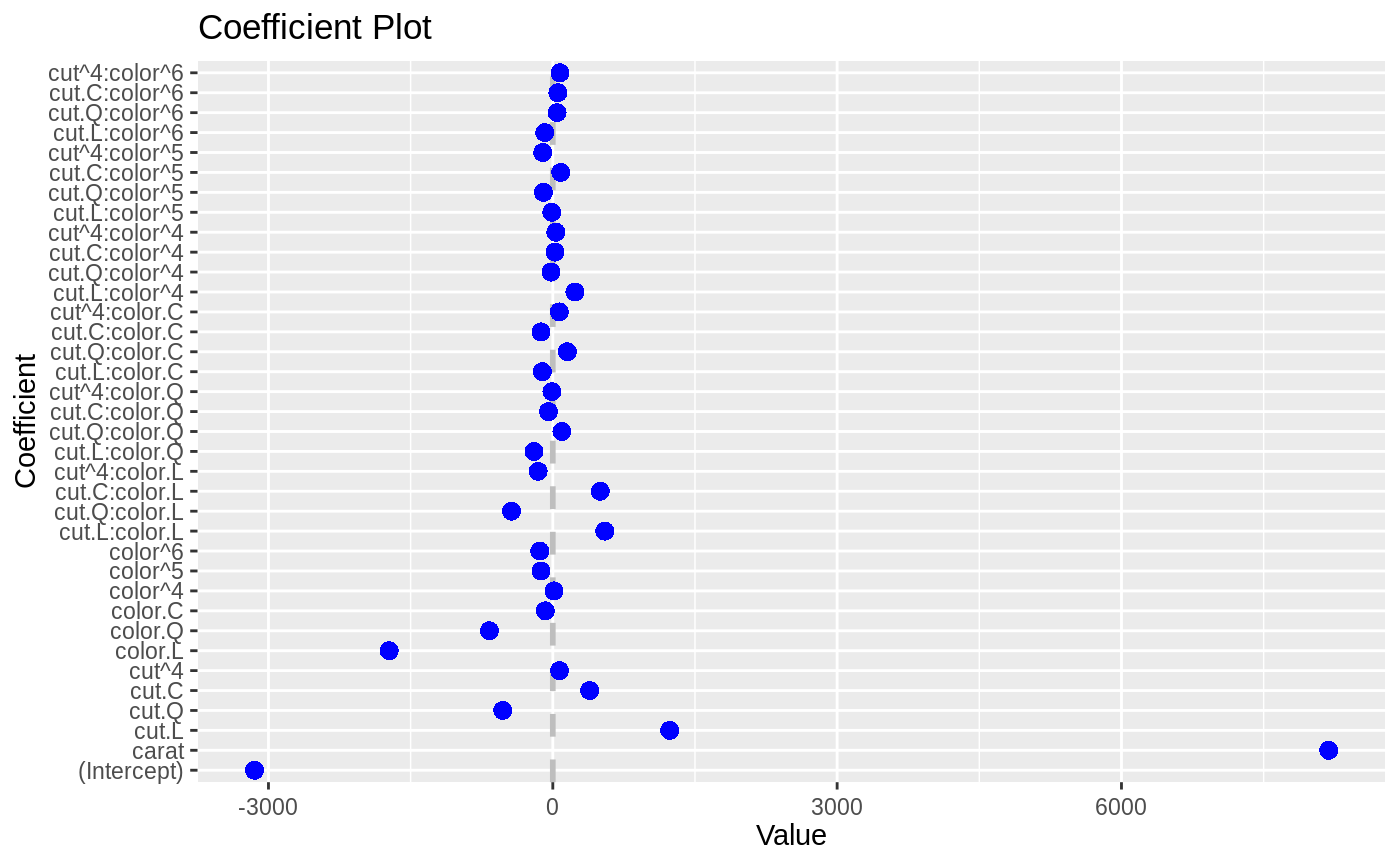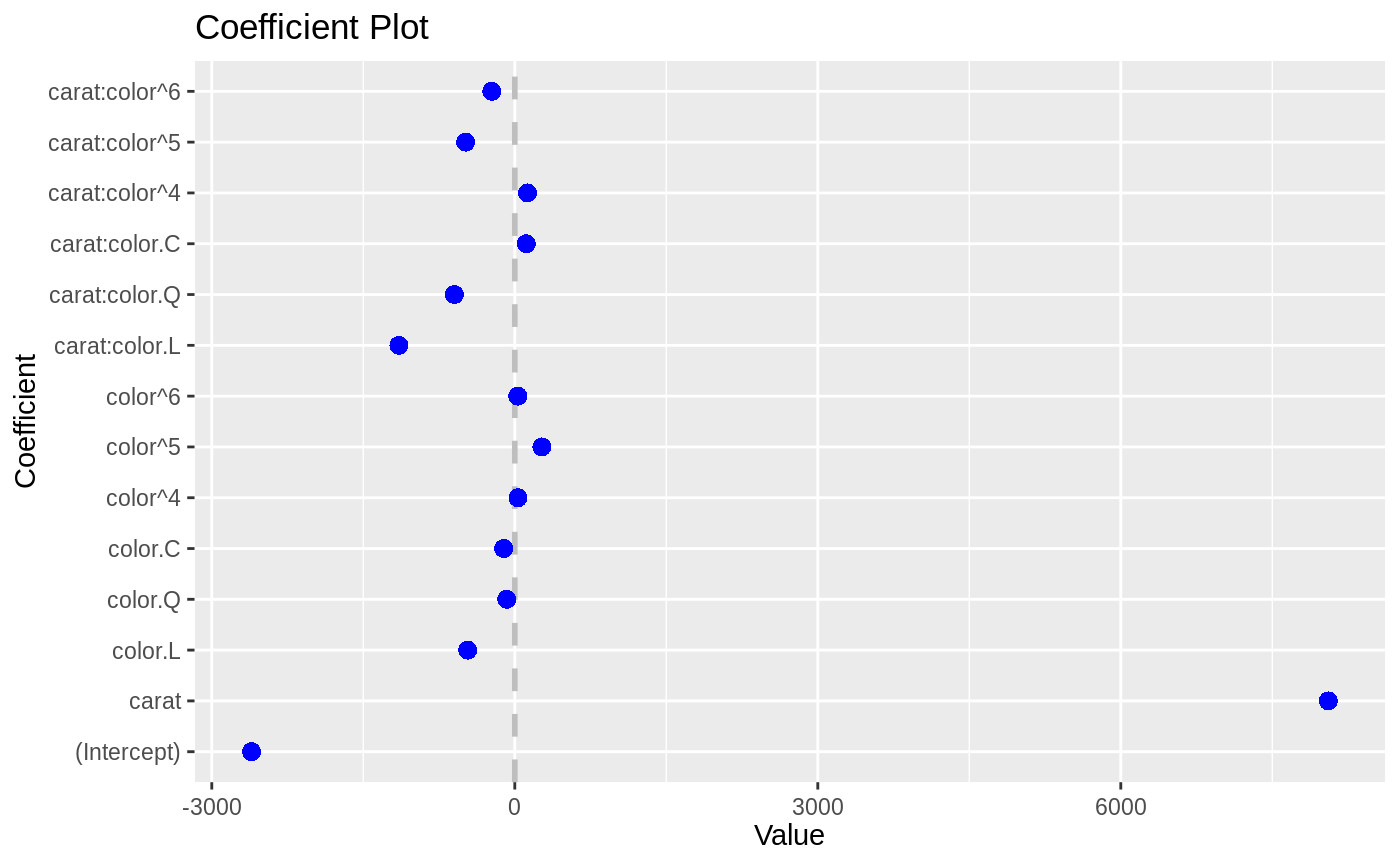coefplot.data.frame
coefplot.data.frame.RdDotplot for coefficients
# S3 method for data.frame coefplot(model, title = "Coefficient Plot", xlab = "Value", ylab = "Coefficient", lwdInner = 1, lwdOuter = 0, pointSize = 3, color = "blue", cex = 0.8, textAngle = 0, numberAngle = 0, shape = 16, linetype = 1, outerCI = 2, innerCI = 1, multi = FALSE, zeroColor = "grey", zeroLWD = 1, zeroType = 2, numeric = FALSE, fillColor = "grey", alpha = 1/2, horizontal = FALSE, facet = FALSE, scales = "free", value = "Value", coefficient = "Coefficient", errorHeight = 0, dodgeHeight = 1, ...)
Arguments
| model | A data.frame like that built from coefplot(..., plot=FALSE) |
|---|---|
| title | The name of the plot, if NULL then no name is given |
| xlab | The x label |
| ylab | The y label |
| lwdInner | The thickness of the inner confidence interval |
| lwdOuter | The thickness of the outer confidence interval |
| pointSize | Size of coefficient point |
| color | The color of the points and lines |
| cex | The text size multiplier, currently not used |
| textAngle | The angle for the coefficient labels, 0 is horizontal |
| numberAngle | The angle for the value labels, 0 is horizontal |
| shape | The shape of the points |
| linetype | The linetype of the error bars |
| outerCI | How wide the outer confidence interval should be, normally 2 standard deviations. If 0, then there will be no outer confidence interval. |
| innerCI | How wide the inner confidence interval should be, normally 1 standard deviation. If 0, then there will be no inner confidence interval. |
| multi | logical; If this is for |
| zeroColor | The color of the line indicating 0 |
| zeroLWD | The thickness of the 0 line |
| zeroType | The type of 0 line, 0 will mean no line |
| numeric | logical; If true and factors has exactly one value, then it is displayed in a horizontal graph with continuous confidence bounds. |
| fillColor | The color of the confidence bounds for a numeric factor |
| alpha | The transparency level of the numeric factor's confidence bound |
| horizontal | logical; If the plot should be displayed horizontally |
| facet | logical; If the coefficients should be faceted by the variables, numeric coefficients (including the intercept) will be one facet |
| scales | The way the axes should be treated in a faceted plot. Can be c("fixed", "free", "free_x", "free_y") |
| value | Name of variable for value metric |
| coefficient | Name of variable for coefficient names |
| errorHeight | Height of error bars |
| dodgeHeight | Amount of vertical dodging |
| ... | Further Arguments |
Value
a ggplot graph object
Details
A graphical display of the coefficients and standard errors from a fitted model, this function uses a data.frame as the input.
Examples
#> # A tibble: 6 x 10 #> carat cut color clarity depth table price x y z #> <dbl> <ord> <ord> <ord> <dbl> <dbl> <int> <dbl> <dbl> <dbl> #> 1 0.23 Ideal E SI2 61.5 55 326 3.95 3.98 2.43 #> 2 0.21 Premium E SI1 59.8 61 326 3.89 3.84 2.31 #> 3 0.23 Good E VS1 56.9 65 327 4.05 4.07 2.31 #> 4 0.290 Premium I VS2 62.4 58 334 4.2 4.23 2.63 #> 5 0.31 Good J SI2 63.3 58 335 4.34 4.35 2.75 #> 6 0.24 Very Good J VVS2 62.8 57 336 3.94 3.96 2.48model1 <- lm(price ~ carat + cut*color, data=diamonds) model2 <- lm(price ~ carat*color, data=diamonds) df1 <- coefplot(model1, plot=FALSE) df2 <- coefplot(model2, plot=FALSE) coefplot(df1)coefplot(df2)

